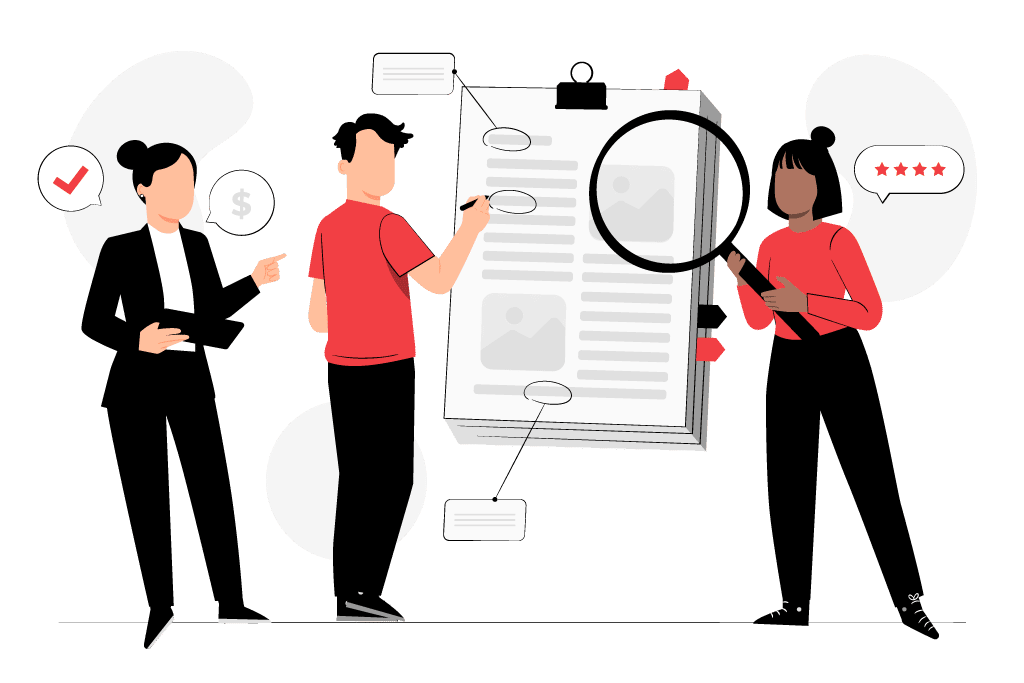Welcome to our comprehensive guide on performance management, a critical aspect of every successful organization. In today’s fast-paced and competitive business world, the efficient management of employee performance is not just a necessity but a strategic advantage. Whether you’re an HR professional looking to optimize your organization’s workforce or a manager aiming to enhance your team’s productivity, understanding the different steps in performance management is essential.
According to SHRM, performance management involves several key steps, including setting goals, monitoring progress, providing feedback, and conducting evaluations.
In this blog, we’ll take you through the various stages that constitute a robust performance management system. From setting clear goals and fostering a culture of continuous feedback to leveraging training and development for performance enhancement, we’ll cover it all. Moreover, we’ll emphasize the pivotal role that HR plays in shaping and executing these processes, ensuring that both individual potential and organizational objectives are aligned.
So, let’s dive into the intricacies of performance management and discover how organizations can navigate these steps to achieve their goals while nurturing their most valuable asset—their people.
Understanding the essence of performance management
Performance management is more than just a procedural requirement; it’s a strategic approach that empowers organizations to maximize their potential. At its core, performance management involves the systematic process of aligning individual and team goals with the overarching objectives of the organization. This alignment ensures that every employee’s efforts contribute directly to the success of the business.
In essence, performance management is a continuous cycle that begins with setting clear and measurable goals. These goals act as guiding stars, steering employees in the right direction and helping them understand what’s expected of them. They also provide a basis for evaluation, fostering a sense of accountability and achievement.
However, performance management isn’t solely focused on the final outcomes. It’s also deeply rooted in fostering a culture of open communication and ongoing feedback. This two-way exchange of information allows managers to provide timely guidance and recognition, while employees can voice their concerns and seek clarification. Such dialogues build trust and promote a collaborative environment.
Integral to the performance management process is the role of HR. Human Resources professionals act as facilitators, ensuring that the organization’s performance management strategies are not only effectively designed but also consistently implemented. HR plays a key role in guiding managers and employees through the process, ensuring fairness and transparency.
In a broader perspective, effective performance management contributes to employee engagement and retention. When employees see their growth and development valued, they are more likely to remain committed to the organization’s goals. Overall, understanding the essence of performance management sets the foundation for a holistic approach that benefits both individuals and the organization as a whole.
Key components of performance management
Performance management encompasses a range of interconnected components that collectively contribute to an organization’s success. These components, when orchestrated effectively, create a comprehensive system that enhances employee performance and aligns it with business goals.
Central to performance management is the process of goal setting. Clear and well-defined goals provide a roadmap for employees, guiding their efforts towards specific outcomes. These goals should be SMART—Specific, Measurable, Achievable, Relevant, and Time-bound. Such goals not only clarify expectations but also enable employees to track their progress and measure their accomplishments.
Continuous feedback is another essential component. Regular communication between managers and employees fosters a culture of improvement. Constructive feedback offers insights into strengths and areas for development, helping employees make necessary adjustments to their performance. This ongoing dialogue also aids in addressing challenges before they escalate.
Performance evaluations represent a critical juncture within the performance management framework. These evaluations assess an employee’s accomplishments against the set goals, providing a holistic view of their contributions. A well-structured evaluation process acknowledges achievements and identifies areas for growth, contributing to employee engagement and development.
Integral to the performance management process is HR’s role in guiding and supporting managers and employees. HR professionals ensure that performance management practices are consistent, transparent, and aligned with the organization’s values. They provide training and resources to facilitate effective goal-setting, feedback, and evaluations.
In essence, understanding the key components of performance management helps organizations craft a holistic approach that nurtures employee potential and drives organizational success. By fostering goal alignment, continuous feedback, and robust evaluations, businesses can harness the power of their workforce to achieve remarkable results.
Setting clear and measurable goals
The foundation of effective performance management lies in the art of setting clear and measurable goals. These goals serve as beacons, guiding employees towards specific objectives and aligning their efforts with the organization’s overarching vision. The process of goal-setting is not merely about assigning tasks; it’s about establishing a sense of purpose and direction for every individual.
Clear goals provide employees with a sense of clarity regarding their responsibilities and expectations. When employees understand what is expected of them, they are more likely to channel their efforts in a focused and purposeful manner. Moreover, the act of setting achievable goals can foster a sense of motivation and commitment. When employees see that their contributions have a direct impact on the larger picture, they are more likely to invest themselves wholeheartedly in their tasks.
Measurability is another critical aspect of goal-setting. Goals should be framed in a way that allows for quantifiable assessment. This provides both employees and managers with a tangible way to track progress and evaluate outcomes. Measurable goals also enable employees to celebrate milestones, reinforcing a sense of accomplishment.
HR professionals play a pivotal role in facilitating the goal-setting process. They assist in ensuring that goals are aligned with the organization’s strategic objectives, are realistic, and promote growth. Additionally, HR can provide training and resources to equip managers with the skills needed to communicate expectations effectively.
In conclusion, setting clear and measurable goals serves as the bedrock of effective performance management. By providing direction, motivation, and a basis for evaluation, well-defined goals empower employees to excel and contribute to the overall success of the organization.
Continuous feedback and communication
In the realm of performance management, the exchange of continuous feedback and open communication forms a cornerstone for fostering growth and improvement. This ongoing dialogue between managers and employees transcends the traditional annual performance review, enabling a dynamic and responsive approach to enhancing performance.
Continuous feedback is a two-way street. Managers provide timely input on an employee’s performance, highlighting strengths and areas that need development. This real-time feedback enables employees to make immediate adjustments, ensuring they stay on track and aligned with their goals. Furthermore, feedback serves as a tool for recognition, acknowledging hard work and dedication.
Equally important, employees have the opportunity to voice their concerns, seek clarity, and share their insights. This reciprocal exchange of information cultivates a culture of transparency and trust. Employees feel valued when their opinions are heard, fostering a sense of belonging and commitment to the organization.
Effective communication within the context of performance management extends beyond feedback conversations. Regular check-ins and one-on-one meetings provide platforms for discussing progress, challenges, and growth opportunities. These conversations enable managers to provide guidance and support, ensuring employees have the resources they need to excel.
HR professionals play an instrumental role in nurturing effective communication. They equip managers with the skills to deliver feedback constructively and offer platforms for open dialogue. HR’s involvement ensures that communication is not just a superficial exchange but a meaningful connection that drives performance and engagement.
In essence, continuous feedback and communication are the lifeblood of performance management. By promoting regular and meaningful conversations, organizations can create an environment that thrives on improvement, collaboration, and mutual understanding. This proactive approach elevates employee performance and contributes to a culture of continuous learning and growth.
Conducting performance appraisals
Performance appraisals stand as pivotal milestones within the realm of performance management, offering a structured platform for evaluating an employee’s contributions and growth. These appraisals provide a comprehensive overview of an employee’s performance, acknowledging achievements and identifying areas for development.
The process of conducting performance appraisals involves a holistic review of an employee’s work, often based on the goals set at the beginning of a performance cycle. It’s a time for managers and employees to reflect on accomplishments, discuss challenges, and align expectations moving forward. Appraisals also serve as a space for employees to express their career aspirations and goals, fostering a sense of ownership over their professional development.
Appraisals can take various forms, from traditional annual reviews to more frequent check-ins. Regardless of the frequency, the focus remains on constructive feedback and forward-looking discussions. Managers have the opportunity to highlight an employee’s strengths and contributions, providing motivation and affirmation. Simultaneously, areas needing improvement can be addressed, guiding employees on how to enhance their performance.
The HR department plays a key role in designing and overseeing the appraisal process. HR professionals ensure that appraisals are fair, consistent, and aligned with organizational goals. They may provide training to managers on conducting effective appraisals and offer resources to support employees in their career journeys.
In conclusion, conducting performance appraisals serves as a vital mechanism for evaluating and enhancing employee performance. By fostering open dialogue, recognition, and targeted development plans, organizations can ensure that their employees are continuously growing, aligned with company objectives, and empowered to reach their full potential.
Addressing performance challenges
Within the landscape of performance management, challenges are inevitable but also present opportunities for growth and improvement. Addressing performance challenges involves recognizing and resolving issues that might hinder an employee’s ability to meet their goals and contribute effectively.
Challenges can manifest in various forms, such as underperformance, lack of motivation, or interpersonal conflicts. It’s crucial for managers to identify these challenges early on and address them proactively. Open and honest communication plays a key role in this process. By engaging in constructive conversations, managers can understand the root causes of challenges and work collaboratively with employees to develop solutions.
One approach to addressing performance challenges is to offer additional support and resources. This might involve providing training, mentoring, or coaching tailored to the specific needs of the employee. By equipping employees with the tools they need, organizations can set them up for success and create an environment that values growth.
Human Resources (HR) plays an instrumental role in helping managers navigate these challenges. HR professionals can offer guidance on best practices for addressing performance issues, ensuring that the process is fair and consistent. They can also act as mediators in cases of conflicts, facilitating conversations and seeking resolution.
In conclusion, addressing performance challenges is an integral aspect of performance management. By tackling issues head-on and offering support, organizations can turn challenges into opportunities for improvement and growth. Managers, supported by HR, play a crucial role in fostering a culture of continuous improvement and ensuring that employees are empowered to overcome obstacles and excel.
Managing performance through training and development
In the ever-evolving landscape of performance management, the role of training and development has emerged as a critical strategy for enhancing employee performance and organizational success. Recognizing that skill sets need to be continually honed and expanded, organizations are leveraging training initiatives to bridge gaps, boost productivity, and foster professional growth.
Training programs are designed to equip employees with the knowledge, skills, and tools necessary to excel in their roles. Whether it’s technical training, soft skills development, or leadership programs, these initiatives address specific needs identified through performance evaluations and feedback. By investing in training, organizations not only enhance individual performance but also drive innovation and adaptability across the workforce.
Development, on the other hand, focuses on long-term growth and career progression. Through mentorship, coaching, and opportunities for skill diversification, employees are empowered to take ownership of their professional journeys. Development initiatives cultivate a sense of loyalty and commitment among employees, as they recognize that their organization values their growth.
Human Resources (HR) plays an integral role in managing performance through training and development. HR professionals collaborate with managers to identify training needs, design relevant programs, and ensure their effective implementation. They also help create a supportive learning culture that encourages employees to continuously seek opportunities for improvement.
In conclusion, managing performance through training and development is a multifaceted approach that enhances both individual capabilities and organizational resilience. By providing employees with the resources they need to thrive, organizations not only drive performance but also foster a sense of investment in their employees’ growth. HR’s involvement in designing, implementing, and facilitating these initiatives ensures that the organization’s talent pool remains competitive, adaptable, and ready to embrace new challenges.
The evolving landscape of performance management
In today’s dynamic business environment, the landscape of performance management is continually evolving to meet the changing needs of organizations and employees. As technology advances, work patterns shift, and the expectations of the modern workforce evolve, performance management practices must adapt to stay relevant and effective.
One notable trend in the evolving landscape of performance management is the shift towards more frequent and informal feedback. Traditional annual reviews are giving way to regular check-ins and real-time feedback discussions. This agile approach allows for immediate course-correction, enabling employees to adjust their performance and goals in response to changing circumstances.
Technology is also playing a significant role in reshaping performance management. Digital tools and platforms streamline the process of setting goals, tracking progress, and providing feedback. These technologies enable managers and employees to engage in performance management activities more seamlessly, regardless of their physical location.
Another key trend is the integration of performance management with employee development. Organizations are recognizing that performance improvement and career growth are interconnected. As a result, performance discussions are increasingly intertwined with conversations about skill development, training opportunities, and career paths.
The role of HR in this evolving landscape is pivotal. HR professionals need to stay abreast of these trends and leverage technology and data to inform their decision-making. They play a critical role in designing and implementing innovative performance management strategies that align with the organization’s goals and values while catering to the preferences of the modern workforce.
In conclusion, the landscape of performance management is undergoing a transformative shift to accommodate the demands of the digital age and the changing expectations of employees. By embracing these trends and evolving their approaches, organizations can create a performance management framework that fosters agility, engagement, and continuous growth.
Conclusion
In conclusion, effective performance management stands as a cornerstone for building thriving organizations in today’s dynamic world. By understanding and implementing the different steps outlined in this guide, businesses can foster an environment of clarity, growth, and collaboration. Clear goal setting, continuous feedback, well-structured appraisals, and strategic training all contribute to optimizing employee performance and propelling organizational success.
Throughout this journey, the role of HR emerges as a guiding force, ensuring that the principles of performance management are not just followed, but also adapted to changing times and evolving needs. As the landscape of work continues to transform, embracing these practices becomes even more crucial.
Remember, performance management is not a one-size-fits-all approach. Each organization might need to tailor these steps to suit their unique culture and objectives. However, the underlying principles remain constant—aligning individual aspirations with collective goals, nurturing talent through training and development, and consistently communicating to enhance performance.
Testlify offers a range of assessments and challenges that allow you to gauge candidates’ knowledge, problem-solving skills, and creativity in real-world scenarios. With our extensive test library, you can objectively evaluate candidates’ abilities, ensuring you shortlist the most talented individuals efficiently. Ready to unlock the potential of your hiring process with our talent assessment tool? Book a free 30-minute live demo with Testlify. Our expert team will guide you through the platform, showcasing relevant skill tests tailored to your organization’s needs. With our support, you can streamline candidate selection, saving valuable time and resources.








